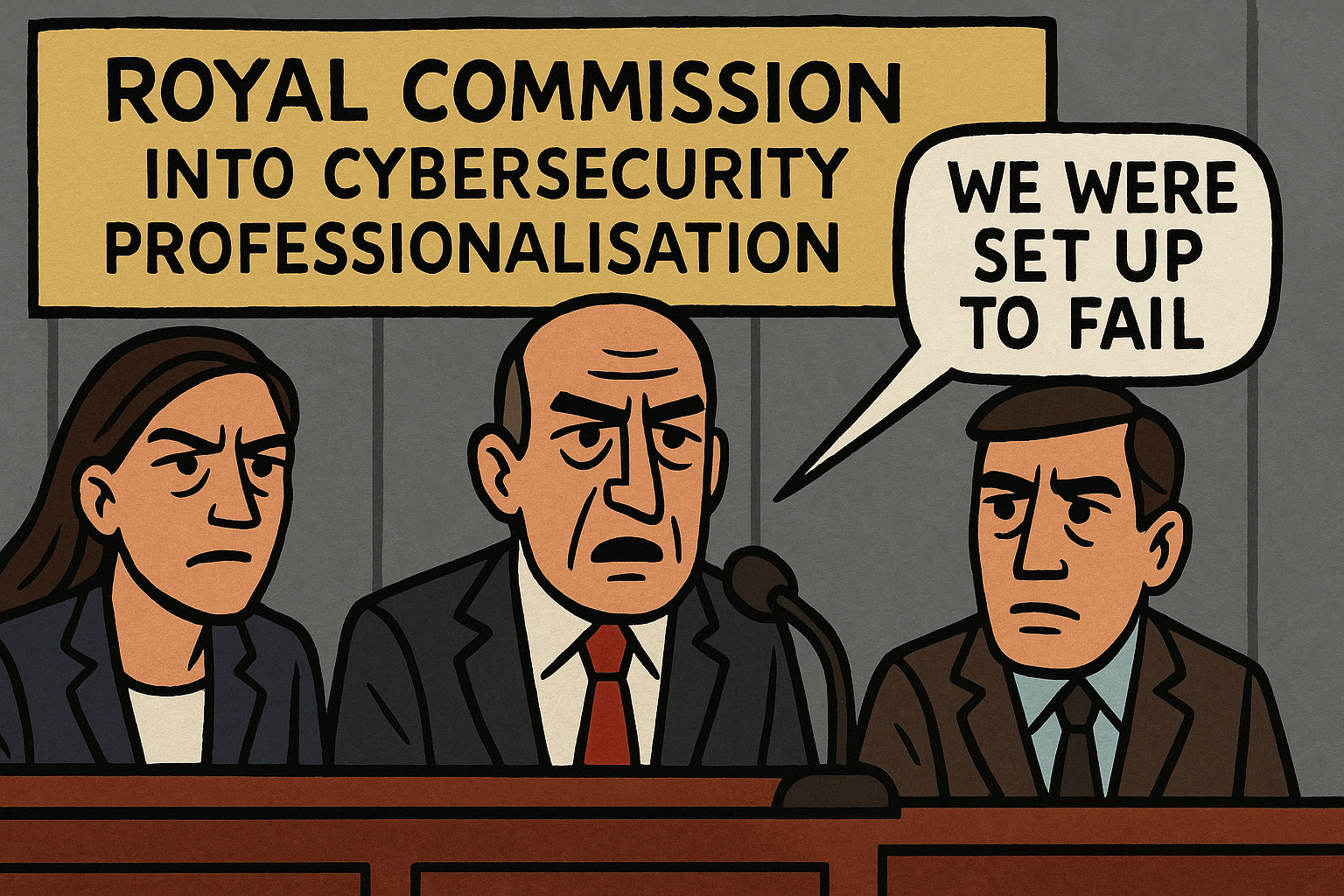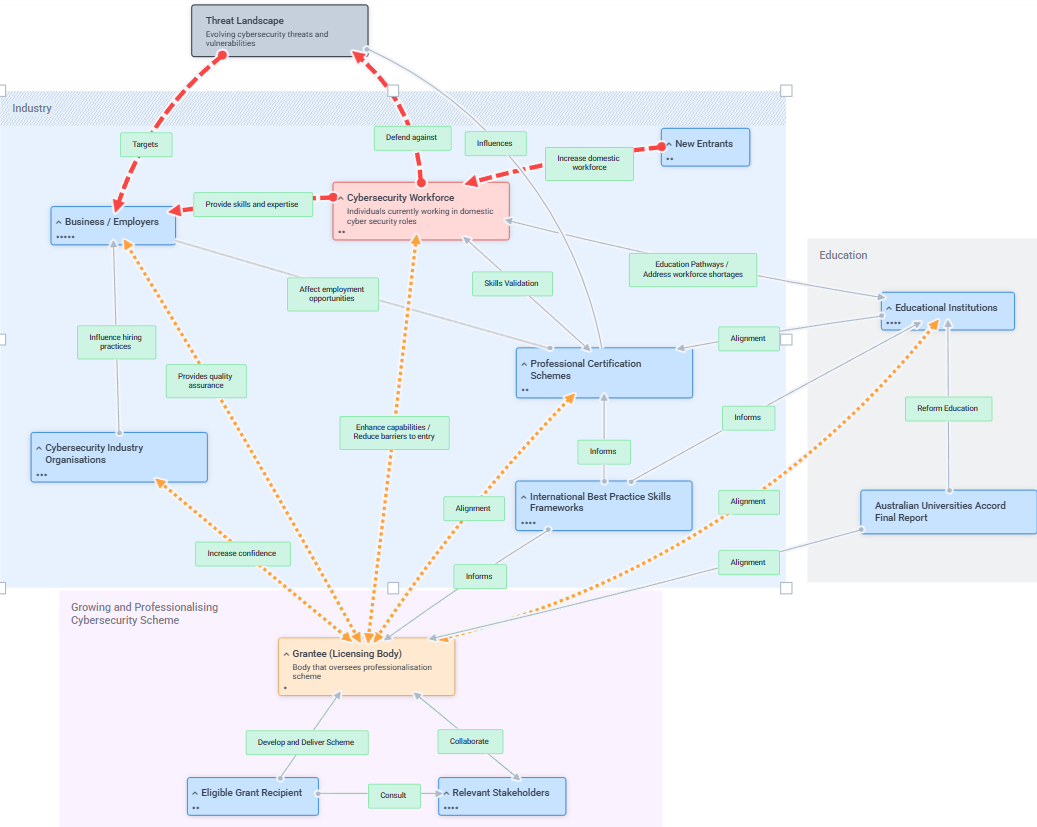
Understand Before You Fix
10 Jun 2025The evidence is now on record, drawn directly from the government’ own grant. It confirms what many suspected: professionalisation raises costs, slows workforce growth, reduces competition, and increases barriers to entry. More importantly, it reveals what few are willing to say out loud - whoever wins the grant may be set up to fail. Read the summary. Read the study. See for yourself.
On May 14th, 2025, Michael Collins completed a scientific paper (copy) that deserves serious attention. It is the product of weeks of disciplined effort, sustained inquiry, and a refusal to settle for anything less than clarity. What emerged is what exemplary evidence-based research and Systems Thinking looks like when done with both intellectual rigour and integrity.
Michael began with a foundational question - one that cuts through noise and ideology alike:
What is the comparative impact of industry professionalization on economic performance, quality of service, workforce growth and retention, and consumer protection across different industries?
He searched through over 126 million academic and scientific papers to identify the most relevant.
From there, he applied Systems Thinking, using evidence-based techniques such as DSRP Theory and the Agent-Based Approach to map the entire architecture the professionalisation grant aims to create. Not just its intended design, but its likely dynamics.
This process led to a full systems map and a multidimensional analysis based on the Grant Opportunity PDF - one that avoids easy conclusions and instead invites the reader to confront the complexity of the issue head-on.

Key Findings of Professionalization Studies
The following summarizes the results of Michael’s literature review:
-
Economic Effects: Prices consistently increased with stricter licensing, competition decreased.
-
Workforce Effects: Earnings typically increased for licensed practitioners, employment effects were generally negative.
-
Service Quality: Evidence was mixed, with one study finding licensing lowered quality, another showing no significant quality improvement, and one reporting higher quality with pre-licensing regulation.
-
Barriers to Entry: Several indicators suggesting that stricter licensing and regulation create entry barriers.
Measures of Success
One of the most valuable contributions from Michael’s research is the set of Measures of Success he developed through DSRP and Agent-Based Analysis based on the grant document.
They offer the industry an independent, practical tool for assessing whether the professionalisation scheme is actually working - no matter who wins the grant or what narrative they offer about their impact.
For the first time, we have a grounded framework for accountability - one that allows us to measure outcomes against reality, not rhetoric.
Economic Indicators
-
Industry Participation Rate: Percentage of employers recognizing and requiring scheme credentials, with targets for growth over time.
-
Professional Enrolment: Number and growth rate of professionals voluntarily registering with the scheme, segmented by career stage.
-
Diversity Demographics: Number of underrepresented groups at various credential levels, measured against industry baselines.
-
Cost Efficiency: Average cost to individuals to obtain and maintain credentials relative to income and compared to international benchmarks.
-
Credential Wage Premium: Earnings differential between credentialed and non-credentialed professionals, tracked to ensure value without creating excessive barriers.
Impact Measures
-
Barrier Reduction: Changes in time-to-hire and ability to enter the profession for new entrants, compared to baseline measures.
-
Employer Confidence: Survey-based measures of employer trust in the credential as a reliable sign of competence.
-
Workforce Mobility: Rates of career progression and job mobility for credentialed professionals compared to non-credentialed counterparts.
-
Skill Alignment: Employer-reported alignment between credential expectations and actual job performance.
-
International Recognition: Formal recognition of Australian credentials by international bodies and multinational employers.
Implementation Quality
-
Stakeholder Satisfaction: Satisfaction ratings from key stakeholders including professionals, employers, and education providers.
-
Pathway Clarity: Survey-based measures of perceived clarity in career progression routes.
-
Scheme Sustainability Progress: Metrics tracking progress toward financial self-sustainability without increasing barriers.
-
Framework Integration: Level of integration with existing international frameworks and credentials.
Michael’s Conclusion
After weeks of research - and weighing all the evidence carefully - Michael arrives at a critical conclusion about the grant’s ability to meet its stated objectives, even in a pilot phase:
This analysis of the Australian Cybersecurity Professionalization Scheme reveals a fundamental tension between its stated objectives and the empirical evidence regarding professionalization outcomes across industries. The scheme’s architects have clearly articulated admirable goals, addressing workforce shortages, creating clear career pathways, and reducing entry barriers. However, the evidence from both occupational licensing and professionalization studies consistently indicates that such initiatives tend to produce outcomes that may directly contradict these objectives.
The rapid literature review demonstrates that while professionalization schemes reliably increase practitioner earnings and may enhance service quality in high-risk domains, they simultaneously create significant market entry barriers, reduce workforce growth, and decrease competition. These findings align with research specifically commissioned by the Victorian Government, which concluded that “there are countless studies” showing that occupational licensing schemes “cost more in terms of higher prices, reduced competition, and poorer consumer choice and options, than the schemes actually resolve.” This presents a critical paradox: the very solution selected to address workforce shortages may instead exacerbate them.
It’s important to be clear: from Michael’s research emerges an immanent critique - a critique from within the system it examines.
He doesn’t dismiss the idea of professionalisation. Instead, he shows through evidence that professionalisation is likely to exacerbate the very problems it aims to fix.
Professionalisation raises prices. It slows workforce growth. It reduces competition. And it increases barriers to entry.
These aren’t external issues that can simply be patched later. They emerge from the structure of professionalisation itself. That’s what makes this research so important - it calls on us to confront the consequences not as accidents, but as outcomes.
Video Discussion
Here’s my discussion with Michael Collins:
Minor correction: AustCyber is not mentioned in the Grant Opportunity website or PDF.
How to get a copy of the scientific paper:
Click here to view Michael’s scientific paper. I also saved a copy.
My Opinion
Michael Collins offers us an invitation to reflect more deeply and honestly on the path we’re taking toward professionalisation.
His literature review and the application of evidence-based systems thinking raise the bar for how this conversation can be held.
It is especially important that Michael grounds his work not in abstract ideals or borrowed overseas models, but in a careful, in-depth analysis of the Australian grant itself.
His focus is clear: to ask whether the grant’s current design is fit-for-purpose.
If we accept his method and the conclusions it leads to, then we are called to recognise that the scheme, in its current form, is most likely setting up its implementers up for failure.
As Michael writes:
The evidence presented in this analysis does not support the conclusion that the proposed scheme, as currently conceived, is likely to achieve its stated objectives of expanding the cybersecurity workforce while reducing entry barriers.
That may sound discouraging to some. But I hear in it not a closing, but an opening. Because Michael also writes:
This is not to suggest that professionalizing the cybersecurity workforce lacks merit entirely. The analysis identifies potential benefits through standardized competency frameworks, clearer career progression, and enhanced industry confidence. However, these benefits appear contingent upon implementation approaches that fundamentally differ from historical professionalization patterns across industries. Without significant design innovations, the scheme risks reinforcing the system’s current tendency toward artificial scarcity rather than workforce expansion.
In this, I sense a hopeful tone - the idea that things can be different, that we can learn from the past without being trapped by it. That we can create something new.
Over the past six months, I’ve spent time listening, learning, and looking closely at the history and challenges of professionalisation in Australia.
The conversations have sometimes been difficult and divisive.
But Michael’s research gives me hope that all this effort may finally have created the conditions for understanding the problems and inviting new ideas.
Now that many of the problems and risks have been clearly proven and explained, the time for radical innovation seems possible. Yet before we can innovate, we must first reconcile ourselves with the the very concept of contradiction itself.
That means recognising that contradictions in systems are not just errors to be eliminated - they are the very engine of progress. Systems evolve because they are undermined by internal contradictions. Contradictions are what drives change forward.
Even the advocates of professionalisation were moved by contradictions they saw in the current system and felt compelled to solve them. But in trying to fix those contradictions, new ones inevitably emerged.
The next step is to acknowledge Michael’s research findings, and understand that contradictions cannot ever be permanently resolved. They is irreducible, unavoidable - and necessary.
The work before us now is not to ignore or downplay the contradictions, but to use them.
Every contradiction we uncover can become the foundation for a new approach - one that breaks from the failures of the past and allows us to rethink professionalisation from the ground up.
Michael clearly articulates this when he writes:
Given these tensions, it would be prudent to more thoroughly investigate alternative approaches to addressing cybersecurity workforce challenges before proceeding with the proposed scheme.
What we often call “progress” is simply the movement from easily resolved contradictions to deeper, more difficult ones.
Progress is never guaranteed. The real question is whether the cybersecurity industry will settle for the status quo — or take the harder path of testing new ideas, while reconciling itself with the new contradictions that will inevitably arise.
If the Department of Home Affairs (DHA) hopes to mobilise the industry toward change, the first step must be to develop a formal, evidence-based business case for why that change is needed.
Crucially, this can be done without assuming or prescribing specific solutions. In doing so, the industry would have the opportunity to respond openly to a clearly defined problem - and offer new and radical ideas previously not considered.
This should be done without expecting consensus. The goal should be people staying in the discomfort of disagreement and still choosing to act together.
It might also help to show how evidence-based research is being considered, so the industry can remain engaged in the belief that its contributions truly matter.